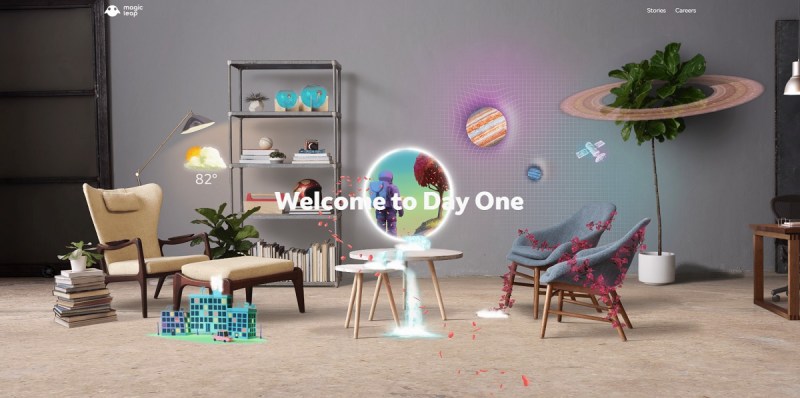GamesBeat: Why is the world you’re creating best viewed through mixed reality?
Broadmore: I think it’s because mixed reality is the most exciting platform, the most exciting avenue to tell new stories. Partially, it’s that it’s uncharted territory, pioneering territory. But ultimately, if you’re creating fiction, you want to connect with people as personally as possible. You want your stories and the visceral reactions to them to be as personal as possible. We’re able to do this really well through books, through the screen, and with other mechanisms, but to be honest — with mixed reality, you can have the player be actually part of the experience.
Everything that Magic Leap is doing — building a light field, building these very intuitive inputs — is about breaking that barrier and humanizing computing. We’re getting rid of the screen, removing the abstract elements. That’s a big part of what we do with game development as well. We physicalize things. How do you press a button? Well, you should literally walk over and press it. How do you pull a lever? Grab it and pull. As opposed to other abstract ways you would have to do that with a traditional computing interface.
From a gaming point of view and from a fiction point of view, this connects and naturalizes things. It feels like the right way to go. We totally could have told stories in other mediums, and we probably will because other mediums will continue to exist. But this one is by far the most exciting.

Above: Magic Leap is turning on the lights on its creations for AR.
Lanning: Also, it’s an irresistible challenge, both on the technological side and the creative side. For me personally, having come from the world of comic books, writing comics for 25 or 30 years, to have the opportunity to try something completely uncharted — we’ve said many times that this is a huge adventure. You don’t get to do that many times in your life.
GamesBeat: Is one of the goals to overlay animation and reality, so you can’t tell which is which?
Broadmore: That’s the ultimate quest, to make the digital and physical merge, and to make those play off each other. When the digital and physical can completely interact in a naturalized way, then we’ll have truly won. This is the first step on that path.
Lanning: When you’re playing a game where the game level, fundamentally, is your house, it’s a completely different feeling. The stakes are raised. The experience is much more immersive.
Broadmore: Even though it’s virtual, it feels like it’s literally happening to you.
Lanning: Because physiologically, it is, right? It feels like it.
GamesBeat: Do you have anything to show yet?
Broadmore: [Laughs] We have some lovely photos we can share of our new studio. That’ll have to suffice for the time being. We’ll be showing more very soon. 2018 is our launch window. There will be events upcoming during the year where we’ll start showing what we’ve been building.

Above: Magic Leap One is the creator edition of the new augmented reality system.
Gray: In terms of the facility, it’s worth noting — when we first started, we were a small team of around five in the back part of Weta Workshop. We’ve grown over the past five years to 50 people. We’re expanding, and Weta Workshop is also expanding, especially in the areas of 3D printing and other emerging technologies we’re using for manufacture.
We’ve established a new facility that’s still part of the broader Weta Workshop campus, just a few minutes down the road, and that gives us the potential and the opportunity to build out testing room areas, similar to real-world spaces. We have modular tech furniture that Weta Workshop’s capabilities built for us, so we can create new living-room spaces or new kitchen spaces every day. We can test out the game on device in those spaces.
Also, because it’s so important — the whole concept of mixed reality is the overlap of the physical and digital. Within our studio space, we’ve put a lot of focus and energy into bringing the tangible stuff into the studio. We’ve acquired a lot of Dr. Grordbort’s exhibition art that had previously toured Europe and China and brought it into the studio. We have a lot of sculptural work, the big fireplaces, creatures, all kinds of stuff. Within the space where our team is working, they can feel that digital-physical overlap.
Lanning: That idea, that the game will change depending on the space that you’re in, is one of the huge challenges, but it’s also what will be really rewarding from a player’s point of view. You can play in your house. Someone else can play it in their own house. Each time it will be slightly different based on where you are.
Broadmore: Principally, it has to adapt to wherever you are. If you look at a video we released a couple of years ago, that’s literally the game. Some of the details are different, but that was it. The one where the robots were coming out of the ceiling, shooting the gun. One of the earlier concept videos.
Lanning: That’s Greg’s hand there in the video. He’s famous, you know.

